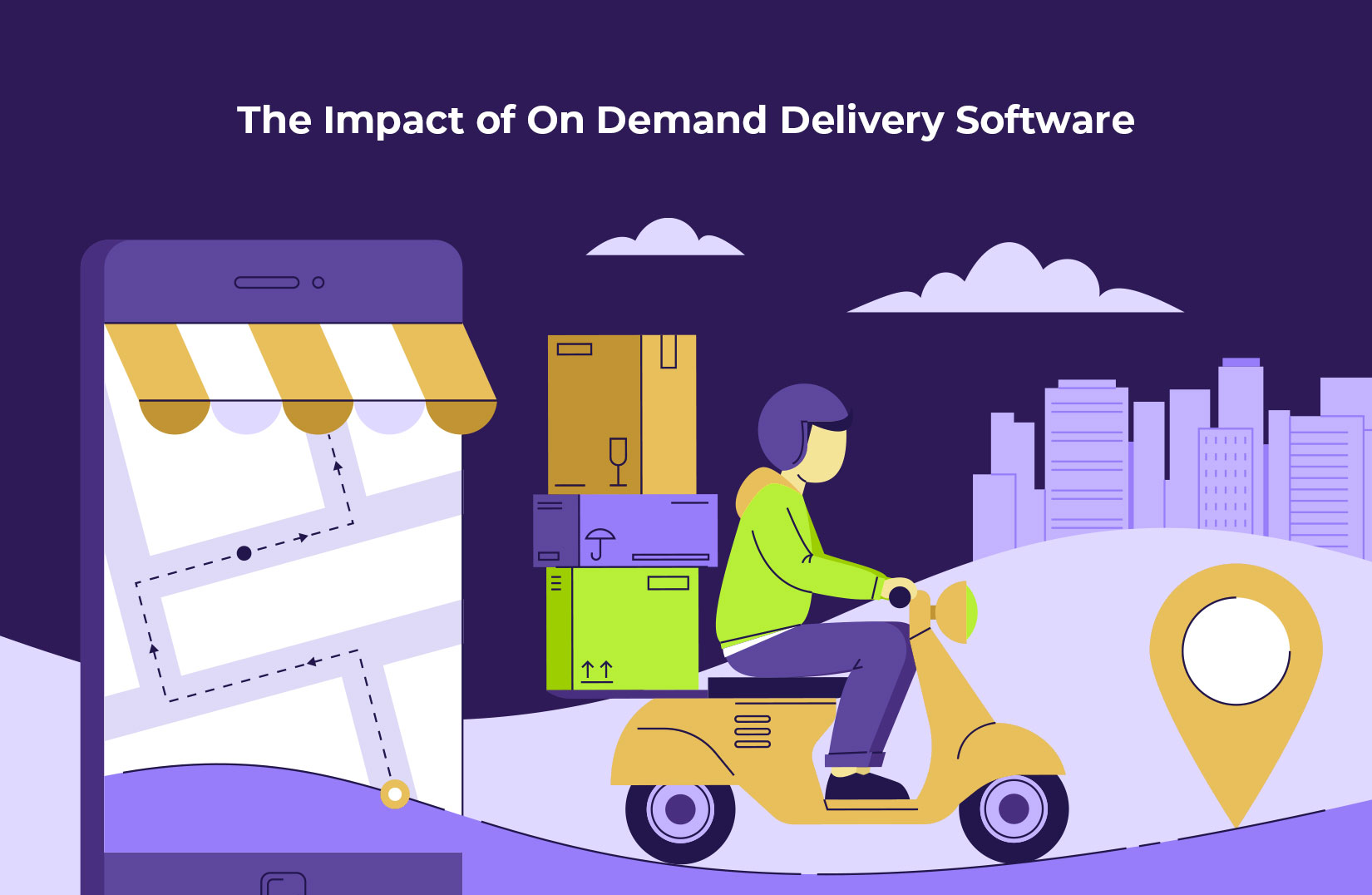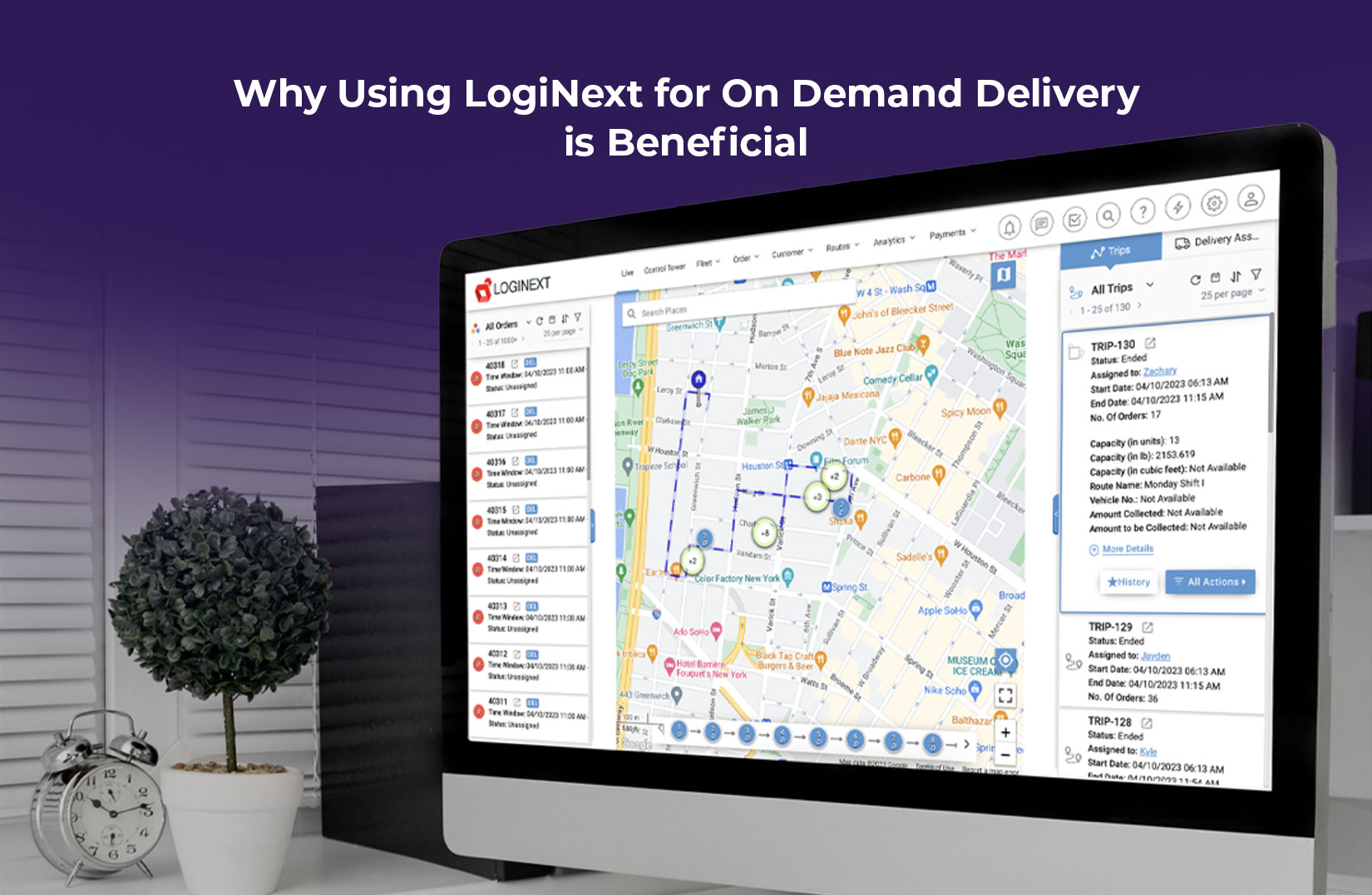
How On Demand Delivery is Changing the Way We Shop in 2025
In 2025, on demand delivery has revolutionized the retail landscape, reshaping how consumers interact with businesses and purchase products. This delivery model, driven by advancements in technology, is now a cornerstone of modern commerce. From groceries to healthcare products, nearly everything can be delivered to customers’ doorsteps in record time. As consumer expectations evolve, businesses must adapt to meet the growing demand for instant gratification and seamless shopping experiences.
The Growth of On Demand Delivery Services
The rise of on demand delivery services has been rapid and transformative. Industry reports project the global on demand delivery market to reach $300 billion by the end of 2025. This marks more than a doubling from its 2022 value of $150 billion. This growth is driven by the increasing adoption of e-commerce, particularly in urban areas where consumers prioritize convenience.
A 2025 survey revealed that 72% of consumers prefer shopping with businesses that offer same-day delivery. Additionally, 45% of consumers are willing to pay a premium for faster service. The pandemic accelerated this trend, with businesses across various sectors embracing on demand delivery platforms to meet customer needs. Companies like Uber Eats, DoorDash, and Instacart have expanded their services beyond food delivery to include groceries and household essentials.
These services have empowered small and medium-sized businesses (SMBs) to compete with larger retailers. They provide access to sophisticated logistics networks without the need for in-house infrastructure. On demand delivery is now a necessity for businesses aiming to stay competitive in the digital age.
The Role of On Demand Delivery Platforms
On demand delivery platforms are at the core of successful delivery services, connecting customers with local couriers to ensure fast and efficient deliveries. They provide businesses with tools to manage orders, track deliveries, and communicate with customers in real time.
Amazon has been a pioneer in this space with its Prime Now service, offering ultra-fast deliveries in major cities. In 2025, more than 90% of Amazon Prime members will have used same-day delivery services. Additionally, over 60% of consumers will expect similar options from other retailers.
Other players, such as Glovo, Deliveroo, etc. have built their brands around quick delivery, focusing on convenience and customer satisfaction. These platforms use advanced algorithms to match orders with the nearest available couriers, optimizing delivery routes and reducing wait times.
For businesses, partnering with third-party on demand delivery platforms offers scalability without the burden of managing a dedicated fleet. This flexibility is valuable during peak seasons or promotional events when order volumes spike. By outsourcing logistics, companies can focus on core business functions such as product development and customer service.
The Impact of On Demand Delivery Software

Efficient on demand delivery systems rely heavily on advanced software. The software automates various aspects of the process, from inventory management and order processing to route optimization and customer communication.
AI-powered delivery software has transformed logistics by predicting delivery times with high accuracy and minimizing delays. Predictive analytics can account for traffic patterns, weather conditions, and driver availability to optimize routes, reducing delivery times by up to 30%.
Real-time tracking systems allow businesses to monitor deliveries and provide transparency, improving customer satisfaction. Integrated feedback tools offer valuable insights into service quality, enabling businesses to make data-driven improvements.
According to a 2024 report, businesses that implemented advanced delivery software saw a 25% reduction in operational costs. They also experienced a 20% increase in customer retention rates. These savings, combined with faster delivery times give businesses a competitive edge in the market.
Changing Consumer Behavior in 2025
The convenience of on demand delivery has significantly influenced consumer behavior. Shoppers no longer need to visit physical stores or plan their purchases in advance. Instead, they can order items online and receive them within hours or minutes.
A 2025 consumer behavior study found 78% of consumers make at least one purchase via on demand delivery each week. Of these consumers, 40% cited time savings as their primary motivator. Additionally, 35% of consumers reported making impulse purchases due to fast delivery options.
On demand delivery has also blurred the lines between online and offline shopping. Many retailers now offer click-and-collect services, allowing customers to order online and pick up their purchases in-store within minutes. This hybrid approach provides more flexibility and convenience.
The healthcare sector has also embraced on demand delivery. Pharmacies offer prescription deliveries, ensuring patients receive medications quickly and safely. This service is particularly valuable for elderly and immunocompromised individuals who may find it challenging to visit physical stores.
Why Using LogiNext On Demand Delivery is Beneficial

For businesses looking to streamline on demand delivery operations, partnering with platforms like LogiNext offers significant advantages. LogiNext provides advanced delivery software that automates and optimizes the entire process, from order management to last mile delivery.
One key benefit of LogiNext is its powerful route optimization feature. By leveraging AI and machine learning, LogiNext analyzes traffic patterns, weather conditions and delivery priorities to suggest the most efficient routes. This helps reduce fuel costs and delivery times by up to 20%.
LogiNext also offers real-time tracking and visibility for both businesses and customers. This transparency improves customer satisfaction by keeping them informed about order status at every step. Predictive analytics accurately estimate delivery times, helping businesses manage customer expectations more effectively.
Another advantage is scalability. LogiNext’s platform handles large order volumes during peak periods, ensuring businesses maintain high service levels during promotional events or holidays. Automated systems reduce the need for manual intervention, allowing companies to focus on core operations.
Challenges and Opportunities in On Demand Delivery
Despites its benefits, on demand delivery faces challenges such as high operational costs, driver shortages and environmental concerns. Last-mile delivery—the final leg of the journey—accounts for more than 50% of overall delivery costs, making it the most time-consuming and complex stage.
However, these challenges present opportunities for innovation. Companies are investing in electric vehicles (EVs) and drones to reduce carbon emissions and improve delivery efficiency. Walmart has partnered with drone companies to pilot same-day drone deliveries in select markets, reducing both delivery times and environmental impact.
Automation is another growth area. Many companies are exploring autonomous delivery robots for last-mile deliveries. These robots navigate sidewalks and streets, delivering packages directly to customers’ doorsteps without human couriers.
The Future of On Demand Delivery
Looking ahead, on demand delivery will continue to shape the future of shopping. As technology evolves, consumers can expect even faster delivery times, more personalized services, and greater sustainability.
Experts predict that by 2030, 80% of retail purchases will involve some form of on demand delivery. Businesses that fail to adapt risk being left behind as consumers increasingly prioritize speed and convenience.
To remain competitive, retailers must invest in on demand delivery platforms and software. Technological advancements, such as drone deliveries and AI-driven logistics solutions, will play a crucial role in the future of on-demand delivery. These innovations are expected to improve efficiency and transform the logistics industry. Sustainability will also be a key focus, with companies adopting eco-friendly practices to reduce their environmental impact.
Conclusion
In 2025, on demand delivery has become essential for modern commerce, reshaping consumer expectations and business operations. Fast, efficient, and AI-powered logistics are driving customer satisfaction and increasing market competition. Businesses must adopt advanced delivery solutions, like LogiNext, to remain relevant, focusing on speed, scalability, and sustainability. LogiNext’s AI-driven route optimization and real-time tracking offer businesses a competitive edge, streamlining operations and improving customer experiences.
As innovations like drones and EVs transform the industry, companies that embrace such advancements will thrive in an evolving digital marketplace. By leveraging LogiNext’s solutions, businesses can meet growing consumer demands while enhancing efficiency, ultimately ensuring long-term success in the rapidly changing on-demand delivery landscape. Click on the red button to book a demo, and know more about the software.
37







@LogiNext